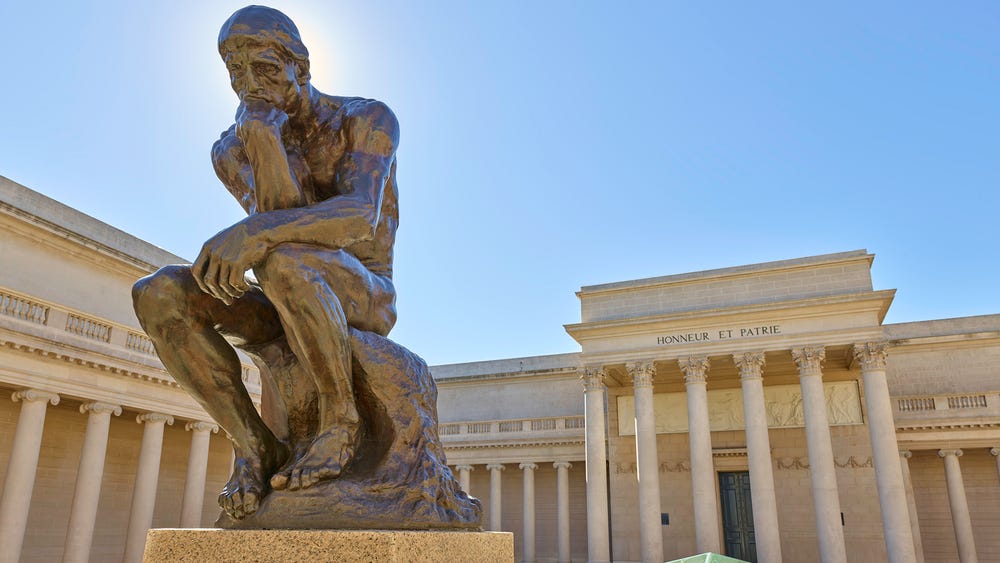Auguste Rodin, The Thinker, 1904. Cast bronze, 72 x 38 x 54 in. (182.9 x 96.5 x 137.2 cm). Fine Arts Museums of San Francisco, Gift of Alma de Bretteville Spreckels, 1924.18.1. Photograph courtesy of the Fine Arts Museums of San Francisco.
The Golden Age
Each country’s painters and composers, represented in season 3, experienced a golden age. For the Dutch, 1588 – 1672 saw the flourishing of many schools of painting, as well as numerous pieces by influential organist-composer Jan P. Sweelinck. The golden age of British painting, 1760 – 1820, was marked by the works of the founder of the British Landscape School, Thomas Gainsborough. La Belle Époque in France, 1871 – 1914, witnessed a historic flowering in all fields of the arts, most of it centered in one city: Paris.
Track 1: The Preciousness of the Flower
Aelst’s painting Flowers in a Silver Vase (16th century), with its decaying tulip blossom in the center, is a testament to the vast importance of flowers, and tulips in particular, to the economy of the Netherlands at this time in history. Next to the tulip is a yellow European chrysanthemum. Composer Joseph Bonnet’s Lied des Chrysanthèmes gives a musical illustration of the serene simplicity of flowers. The sweetness and quietness of the music mimics the pondering of a precious, elegant flower in full bloom.
Track 2: Rodin and Franck
Two giants of 19th-century Paris, Auguste Rodin and César Franck created masterworks of extensive range. Franck’s Chorale in A Minor, his final composition, is the culmination of his musical work, simultaneously new and old, explosive with virtuosity, heartbreakingly beautiful with melodic sophistication. The monumental Rodin bronzes The Thinker (1904) and The Three Shades (1898) could be categorized the same way.
Track 3: Nature, the Most Perfect Muse
Nature has always been an artist’s greatest muse, and when combined with human love, as in the High Middle German poem “Unter der linden grüne” (“Under the Linden Green,” ca. 1200), we have perfection. The poem was paired with an old French melody and became quite popular during the Renaissance period. Jan Both’s Italian Landscape with Horsemen (17th century) focuses more on the tree than the horsemen. Perhaps both artists were observing that all of life exists within the context of trees and nature.
Track 4: Summer Daydreams
The English countryside calls to mind spaciousness and freedom. English composers have loved this aspect of their native land, perhaps none more than Ralph Vaughan Williams. His depiction of a lark ascending, fluttering, dipping, and gliding immediately conjures images of soaring liberty. Thomas Gainsborough’s painting, Landscape with Country Carts, nearly 150 years earlier, seems to foreshadow what musicians would only later discover: the English countryside is evocative and beautiful.
Track 5: Royal Pomp
English pageantry has a special place in art history, at once formal but compelling, depicting the jubilant side of military prowess. John Stanley’s wonderful Trumpet Voluntary was written for a solo organ demonstrating the trumpet stop. “Voluntaries” were meant to be played before and at the conclusion of church services, so called because organists were not actually paid to play outside of the services themselves. The piece matches the contemporaneous, larger-than-life painting of William Beechey’s Master James Hatch (1796) as he models noble military attire. Although Hatch was far too young to serve, his station groomed him for this appearance.



